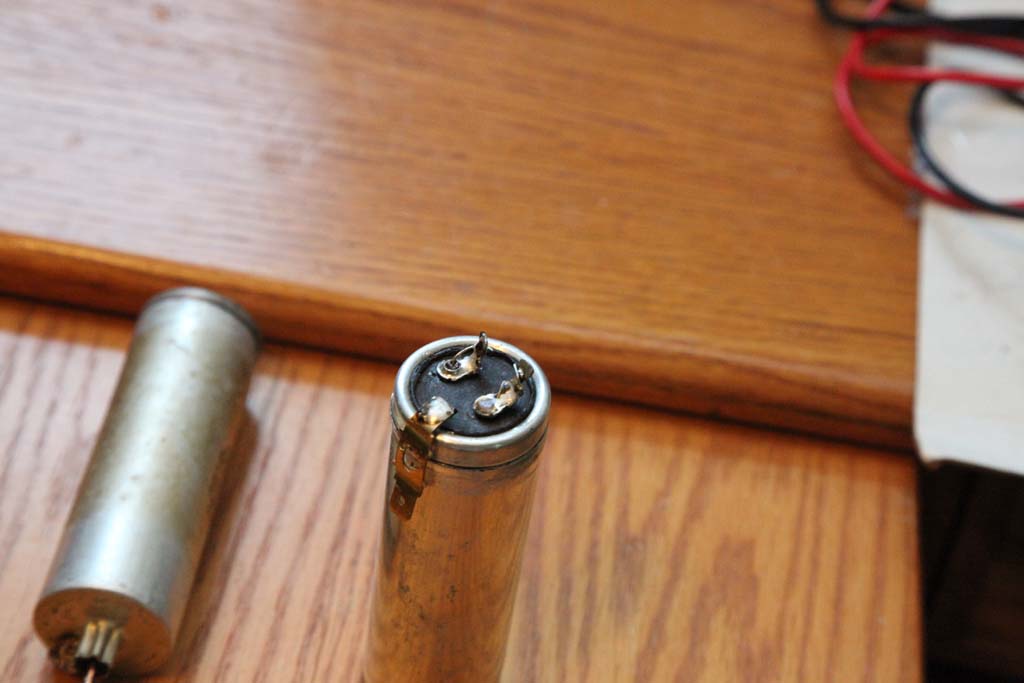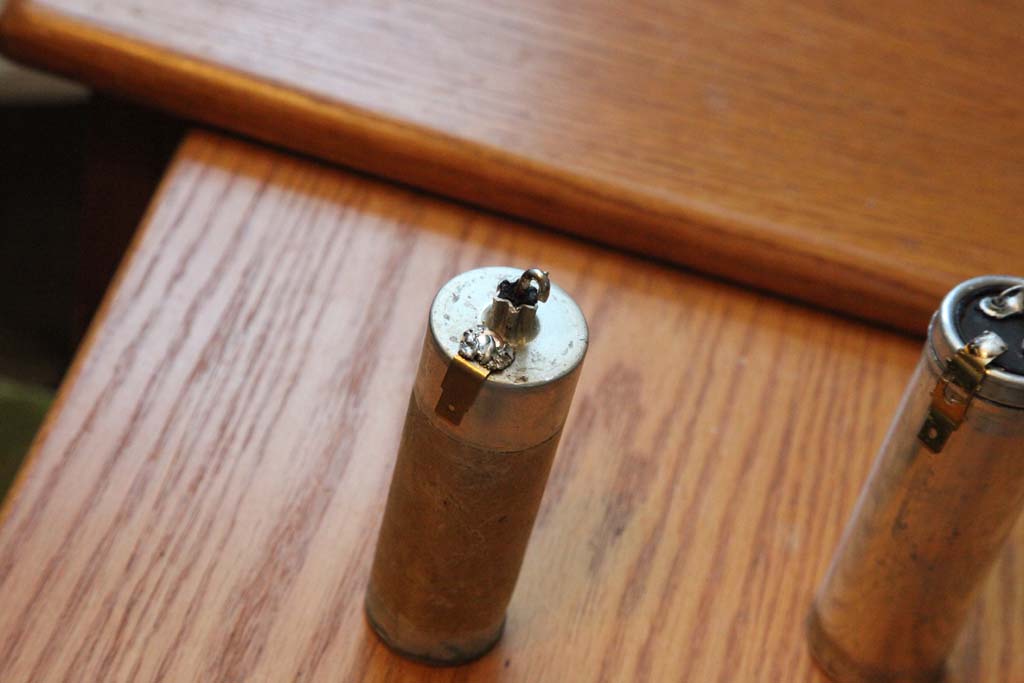08-09-2014, 04:37 PM
Electrolytics
This is the way I did mine this time around:
On the dual I drilled out the lugs, riveted them with copper rivets, extracted the mandrel and threaded the caps through them, flooding with solder afterwards.
The negative I soldered to a brass QC, and it will go under the cardboard tube insulator to provide the connection.

On the single I used the copper-plated mandrel from that rivet as the pole (it is very rigid and solders well), and the minus is the same way - brass QC riveted to the body and soldered to the cap's lead, then it will go under the clamp that holds the caps to provide the connection (this one is connected to the chassis)

If you as why I did not simply use wires as I did most of the times, the answer is - I want these to provide the suppoprt for existing wiring the same way the originals did, so I do not have to splice and tape/heatshrink the connections. Makes it simple and the existing wires can be reused the same way they were before.
This is the way I did mine this time around:
On the dual I drilled out the lugs, riveted them with copper rivets, extracted the mandrel and threaded the caps through them, flooding with solder afterwards.
The negative I soldered to a brass QC, and it will go under the cardboard tube insulator to provide the connection.
On the single I used the copper-plated mandrel from that rivet as the pole (it is very rigid and solders well), and the minus is the same way - brass QC riveted to the body and soldered to the cap's lead, then it will go under the clamp that holds the caps to provide the connection (this one is connected to the chassis)
If you as why I did not simply use wires as I did most of the times, the answer is - I want these to provide the suppoprt for existing wiring the same way the originals did, so I do not have to splice and tape/heatshrink the connections. Makes it simple and the existing wires can be reused the same way they were before.



![[-] [-]](https://philcoradio.com/phorum/images/bootbb/collapse.png)


